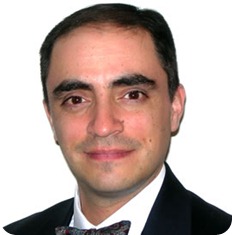Scientists at the University of Georgia, Harvard Medical School and the University of Utah have discovered a new gene
that regulates heme synthesis in red blood cell formation. Heme is the
deep-red, iron-containing component of hemoglobin, the protein in red
blood cells responsible for transporting oxygen in the blood.
The study was published online Nov. 7 and will be in the Nov. 22 print edition of the journal Nature. The findings promise to advance the biomedical community's understanding and treatment of human anemias and mitochondrial diseases, both known and unknown.
The gene-known as mitochondrial ATPase inhibitory factor-1 gene or Atpif1-was uncovered from a chemical mutagenesis screen of zebrafish, an organism which shares many of the same genes that regulate blood development in humans.
"With zebrafish, we are able to accelerate natural disease processes and screen for many more mutations in blood than we could ever see in random circumstance of human patients," said study senior co-author Dr. Barry Paw, a hematologist and associate professor of medicine at Harvard Medical School.
"In our case, we were looking for mutants that were bloodless, presumably because whatever gene that was inactivated by the random mutation must be critical for blood development, if one of these embryos were bloodless."
That is what Paw and his team found when they stumbled upon the particular "bloodless" mutant zebrafish called pinotage. The loss of the Atpif1 gene was the cause of the fish's severe anemia.
The next step for the team was to determine if the anemia was a defect of iron metabolism or heme homeostasis. Collaborating with molecular biologist Jerry Kaplan at the University of Utah, the researchers discovered a possible link between Atpif1 and ferrochelatase, the terminal enzyme in heme synthesis.
UGA microbiologist Harry Dailey, a leading authority in the structure and function of ferrochelatase, was brought on board. Collaborative work between the Paw and Dailey laboratories uncovered a broader mechanistic role for Atpif1 in regulating the enzymatic activity of ferrochelatase.
The study was published online Nov. 7 and will be in the Nov. 22 print edition of the journal Nature. The findings promise to advance the biomedical community's understanding and treatment of human anemias and mitochondrial diseases, both known and unknown.
The gene-known as mitochondrial ATPase inhibitory factor-1 gene or Atpif1-was uncovered from a chemical mutagenesis screen of zebrafish, an organism which shares many of the same genes that regulate blood development in humans.
"With zebrafish, we are able to accelerate natural disease processes and screen for many more mutations in blood than we could ever see in random circumstance of human patients," said study senior co-author Dr. Barry Paw, a hematologist and associate professor of medicine at Harvard Medical School.
"In our case, we were looking for mutants that were bloodless, presumably because whatever gene that was inactivated by the random mutation must be critical for blood development, if one of these embryos were bloodless."
That is what Paw and his team found when they stumbled upon the particular "bloodless" mutant zebrafish called pinotage. The loss of the Atpif1 gene was the cause of the fish's severe anemia.
The next step for the team was to determine if the anemia was a defect of iron metabolism or heme homeostasis. Collaborating with molecular biologist Jerry Kaplan at the University of Utah, the researchers discovered a possible link between Atpif1 and ferrochelatase, the terminal enzyme in heme synthesis.
UGA microbiologist Harry Dailey, a leading authority in the structure and function of ferrochelatase, was brought on board. Collaborative work between the Paw and Dailey laboratories uncovered a broader mechanistic role for Atpif1 in regulating the enzymatic activity of ferrochelatase.
"We believe that the two iron-two sulfur (2Fe- 2S) cluster of
ferrochelatase allows it to sense certain metabolic fluxes in the cell
and respond to those fluxes in an appropriate way," said Dailey, who is a
professor of microbiology and director of the UGA Biomedical and Health
Sciences Institute. "When Atpf1 is deficient, there is a change in the
mitochondrial pH/redox potential. This change is sensed by the cluster,
and ferrochelatase activity is turned down, which results in diminished
heme synthesis."
The researchers also were able to produce data on the human version of Atpif1, noting its functional importance for normal red blood cell differentiation as well as how a deficiency may contribute to human diseases-such as congenital anemias and disorders related to dysfunctional mitochondria, the organelles that power the cell.
Overall, Dailey believes the study's results will impact the field of red blood cell development significantly with the establishment of the ferrochelatase [2Fe-2S] cluster as a new regulatory component in heme synthesis. New areas of investigation will open, he said, and the molecular basis of currently undefined red blood cell-based syndromes and diseases may be revealed.
Source: University of Georgia
The researchers also were able to produce data on the human version of Atpif1, noting its functional importance for normal red blood cell differentiation as well as how a deficiency may contribute to human diseases-such as congenital anemias and disorders related to dysfunctional mitochondria, the organelles that power the cell.
Overall, Dailey believes the study's results will impact the field of red blood cell development significantly with the establishment of the ferrochelatase [2Fe-2S] cluster as a new regulatory component in heme synthesis. New areas of investigation will open, he said, and the molecular basis of currently undefined red blood cell-based syndromes and diseases may be revealed.
Source: University of Georgia





 Dr. Javier Bolaños Meade is the Associate Professor of
Dr. Javier Bolaños Meade is the Associate Professor of 



